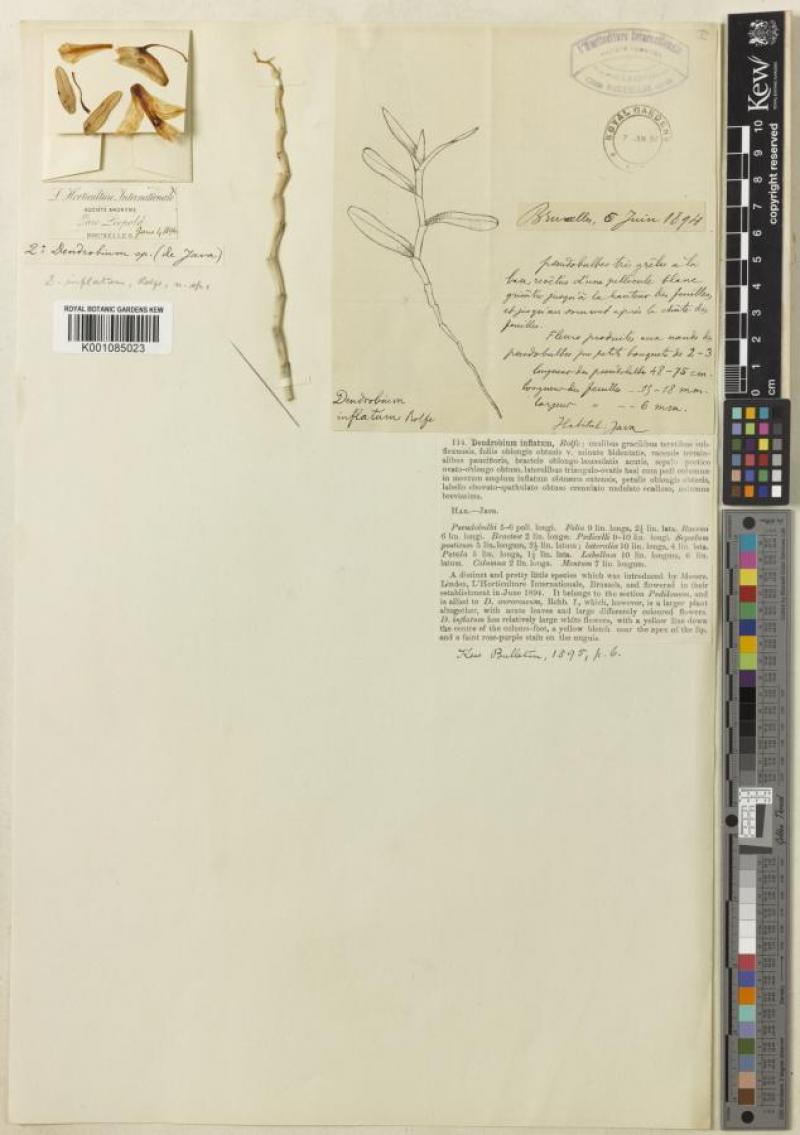Dendrobium inflatum
Also known as: The Inflated Dendrobium or Anisopetala inflata in the subfamily: Epidendroideae
General Information
The Inflated Dendrobium is a sympodial warm growing orchid belonging to the sub family Epidendroideae. The name refers to the inflated mentum.
Plant Description
Sympodial. Grows to 35cm. Each new growth has numerous oblong shaped leaves that grow to 2cm long. Pseudobulbs grow to 35cm
Substrate(s)
- Coarse
Climate
Grows at low to high elevations. Rainfall ranges from 25mm to 353mm per day, heaviest in July and lightest in February. Humidity ranges from 69% to 82%, highest in June and lowest in March. Temperature ranges from 15C to 26C, highest in April (17C to 26C) and lowest in January (15C to 23C).
Watering
These orchids prefer a constant supply of moisture, with a slight drying out between waterings. Saucers can be placed under pots to retain moisture during hot weather, however the saucers should be removed or let to dry every 1-2 weeks to prevent rot. Keep an eye on the plant especially in hot weather and look for cues of under/overwatering and adjust accordingly.
During Spring and Winter, be sure to keep media moist. Keep moisture levels up during hot weather as the plant is prone to dehydrationFertiliser
Apply liquid based fertiliser per recommended directions. They can benefit from a high phosphate fertiliser leading up to flowering season, followed by a high nitrogen fertiliser when new growth appears, and a balanced fertiliser in other times. These orchids can also tolerate slow release fertiliser applied 1-2 pellets per cup (250ml) of media.
Use balanced fertiliser year round. Apply fertiliser regularly at half strength year round.

